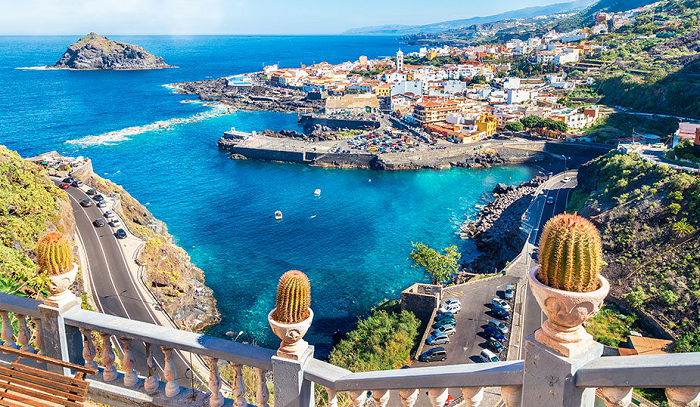The island of Tenerife, the largest of the Canary Islands, is home to some of the most impressive tourist attractions in the world. Some are of a natural nature, such as the Teide volcano or the Masca ravine, others are artistic, such as its world-famous Carnival. Beaches, gastronomy, viewpoints, theme parks, archaeological remains… we could say that Tenerife has it all. Today we are going to talk about another facet of the Canary Island, the most charming towns. In addition, it is very easy to access them by means of a transfer from any of the two Tenerife airports and thus stay in one of the many idyllic locations that Tenerife has.
Garachico
It is one of the most charming municipalities on the island of Tenerife and one of those that have best managed to preserve its historical-artistic heritage. Perhaps the main reason and another of its attractions in itself is that the town of Garachico had to be completely rebuilt at the beginning of the 18th century. This was due to a volcanic eruption that destroyed what was the thriving first capital of Tenerife. This quiet place is perfect for relaxing and taking a dip in its impressive natural pools, called El Caletón, and enjoying a walk through its narrow streets and well-kept squares.
Puerto de la Cruz
This municipality is the smallest on the entire island of Tenerife, but it is one of the most touristic and most charming. It has one of the best climates of all the Canary Islands and that is why it became one of the first holiday centers in Spain and in all of Europe, declared a Place of National Tourist Interest in 1955. Puerto de la Cruz It has several easily accessible beaches, the Lago Martiánez swimming pool complex, conceived by the Canarian artist and architect César Manrique or the impressive Loro Parque, a world institution for the conservation of flora and fauna.
In the streets of its historic center, the facades of the houses, its charming squares and the commitment to urban art stand out. In the fishing district of La Ranilla we can find numerous murals by various artists that adorn the facades of the houses.
Masca
Another of the essential towns of Tenerife is Masca. It is, without a doubt, one of the most spectacular on the entire island due to its impressive natural surroundings combined with the beautiful traditional Canarian-style houses. All this within the framework of one of the most spectacular ravines in the world and that can be explored on foot. Once down, after a path of a certain level, you can go to Los Gigantes in a boat or, the bravest and most athletic, take the way back, where you will have to overcome all the unevenness previously lowered. We warn you that it is a memorable experience but very hard in the case of walking down and up.
La Orotava
This small city appears imperial from the top of one of the most beautiful valleys in all of the Canary Islands and which bears its name. From various corners of the city, the views of the mountains and the sea are a true luxury. In the city you will find cobbled streets, slopes, alleys, squares and one of the best preserved architectural heritage of the entire Canary archipelago. La Orotava was the meeting place for high society on the island of Tenerife, hence the numerous mansions and palaces, many dating from the 17th and 18th centuries, which are of singular beauty and show the power of these families. The Casa Torre Hermosa, the Casa de Los Balcones, the Casa del Turista or the Casa Lercaro stand out, but there are more.
San Cristobal de la Laguna
San Cristóbal de La Laguna or, simply, La Laguna, is the third city with the most inhabitants in the entire Canarian Autonomous Community and is home to a university with more than 30,000 students. It is definitely worth it from an artistic point of view. Declared a UNESCO World Heritage Site in 1999, one only has to take a walk through the streets of the center of this city, founded in 1496, to admire the beauty that made it worthy of this important recognition.
The construction structure that was used in La Laguna, in the form of a grid, was a novelty for Europe at the time. In addition, it was the model on which the new cities that the Spanish built when they discovered the “New World” were inspired. The Plazas del Adelantado and San Francisco stand out, the surroundings of Herradores, San Agustín and Obispo San Francisco streets, the Casa Anchieta, del Corregidor, de Nava palaces and, of course, the magnificent Cathedral of Nuestra Señora de los Remedios.


Leave A Comment